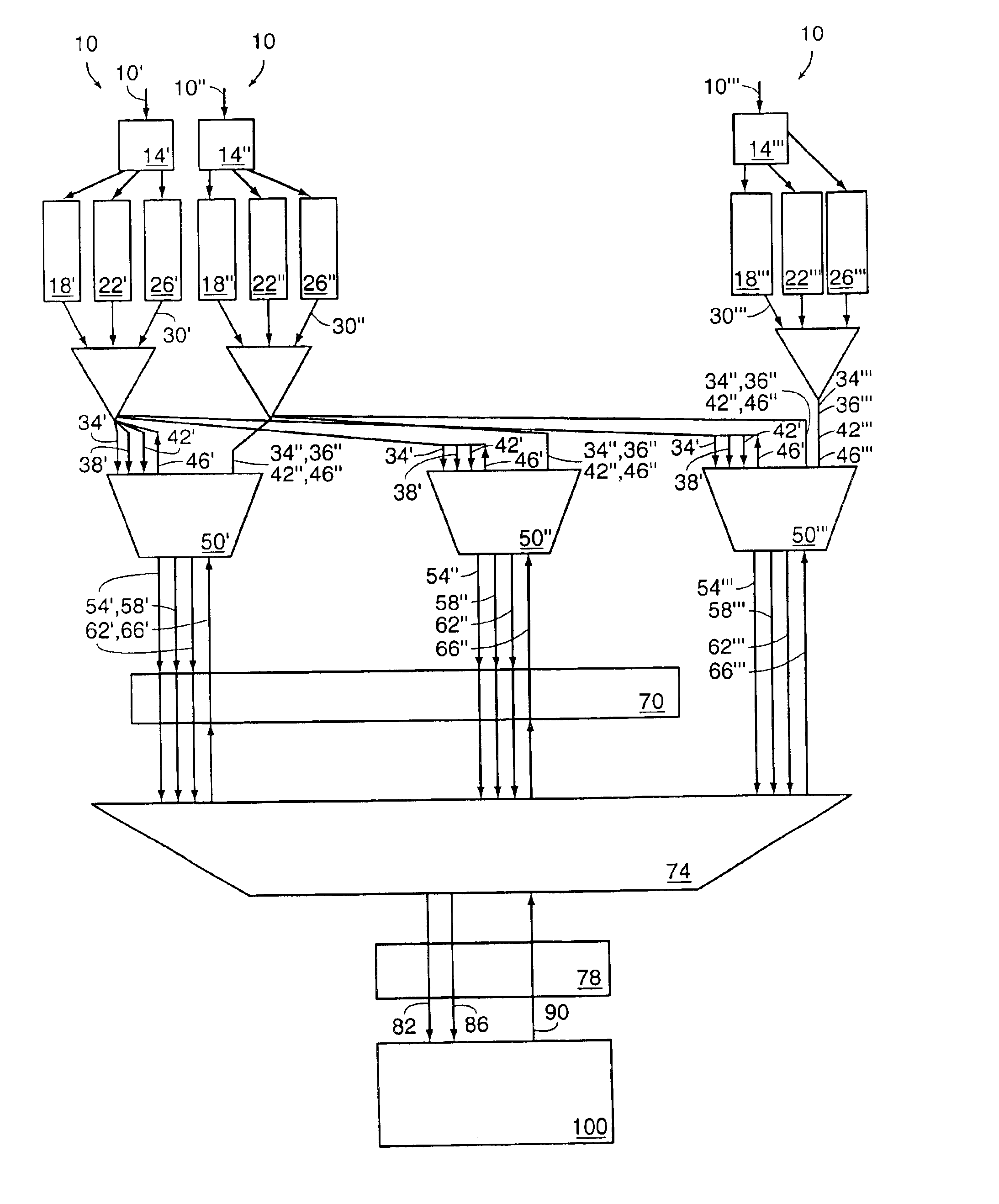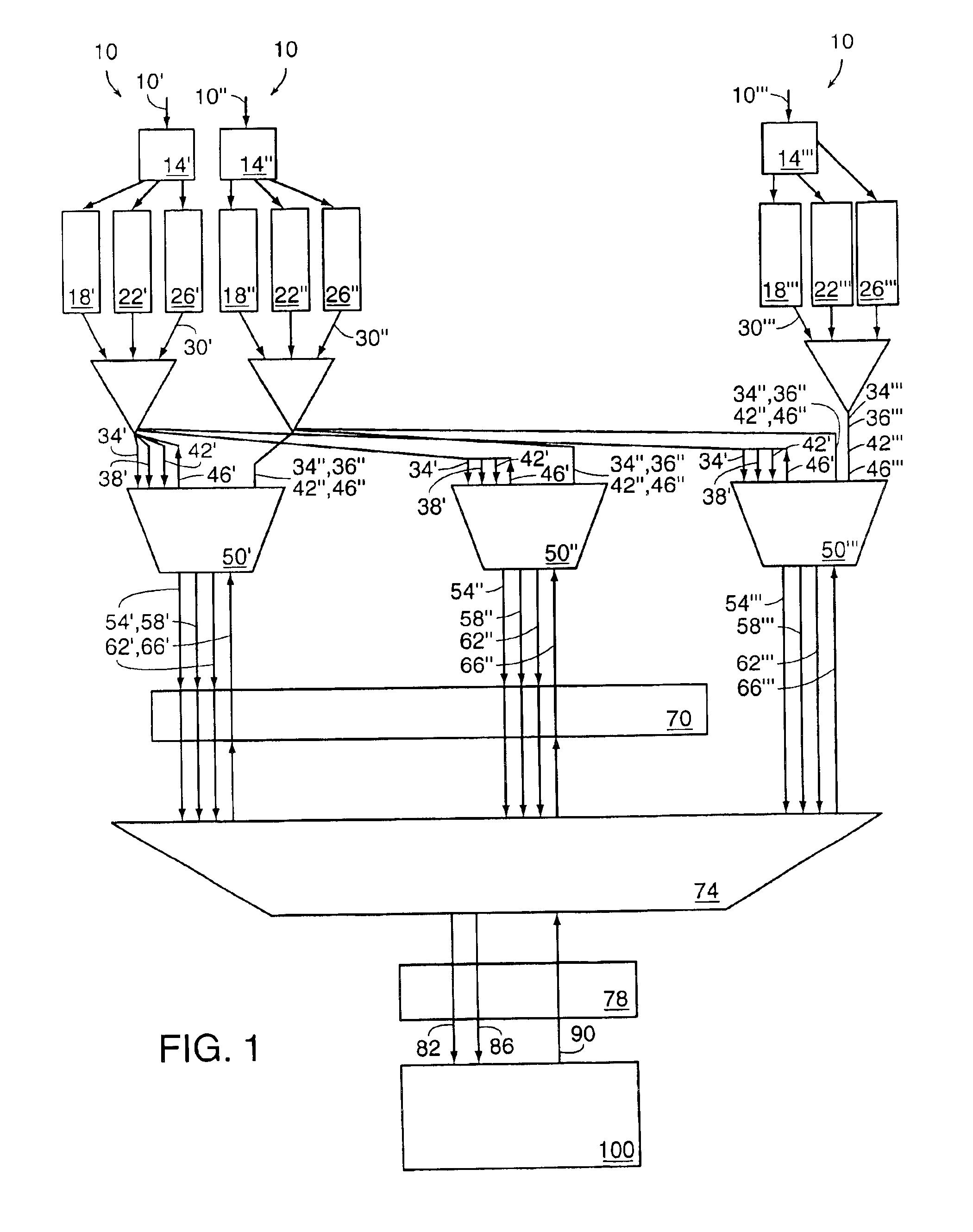Multi-level scheduling method for multiplexing packets in a communications network
a communication network and multi-level scheduling technology, applied in the field of telecommunications, can solve the problems of higher costs than other problems, and achieve the effects of reducing communication costs, maximizing resource utilization, and efficient use of communication channels
- Summary
- Abstract
- Description
- Claims
- Application Information
AI Technical Summary
Benefits of technology
Problems solved by technology
Method used
Image
Examples
Embodiment Construction
[0021]The user is allocated bandwidth according to the classes of service subscribed to. The user typically subscribes to various budget categories according to the importance (i.e., priority) of the data to be transmitted and the anticipated volume of traffic. Thus the user might subscribe to ten megabits / second of guaranteed bandwidth, ten megabits / second of regulated bandwidth, and a best effort weight of 20. Any bandwidth available for the best effort category is distributed to users according to the relative weights of their best effort subscriptions.
[0022]Referring to FIG. 1, data packets from each of the user data streams 10′, 10″, 10′″ (generally 10) are received by a respective one of a plurality of header analyzers 14′, 14″, 14′″ (generally 14). Each header analyzer 14 reads the header of the data packet from the user stream 10. The analyzer 14 then passes the data packet to one of the three class of service queues 18′, 22′, 26′, 18″, 22″, 26″, 18′″, 22′″, 26′″ (generally ...
PUM
 Login to View More
Login to View More Abstract
Description
Claims
Application Information
 Login to View More
Login to View More - R&D
- Intellectual Property
- Life Sciences
- Materials
- Tech Scout
- Unparalleled Data Quality
- Higher Quality Content
- 60% Fewer Hallucinations
Browse by: Latest US Patents, China's latest patents, Technical Efficacy Thesaurus, Application Domain, Technology Topic, Popular Technical Reports.
© 2025 PatSnap. All rights reserved.Legal|Privacy policy|Modern Slavery Act Transparency Statement|Sitemap|About US| Contact US: help@patsnap.com



